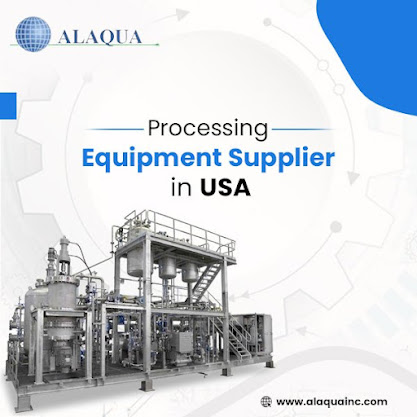Different types of heat exchangers are required for various applications. Lower fins per inch (FPI) are frequently used in sectors such as pulp and paper to reduce airside fouling and make cleaning easier. Weight is a consideration in other applications, such as the military, and it influences material choices. In this piece, we'll look at some of the unusual design features frequently added when creating heat exchangers for the refrigerated storage of potatoes, onions, beets, and other vegetables. Alaqua offers processing equipment including cold storage evaporators and processing equipment services worldwide based in the US.
End-User Customization Capability
To avoid spoilage, commercial agriculture storage warehouse cooling systems frequently operate at temperatures just above freezing. Frosting on coils is a serious worry because of the low temperatures and humidification, as a result, many businesses employ electric heating components to prevent frost and ice from forming on evaporators. Knowing this, some companies such as Alaqua add heating notches in their coils to allow these devices.
If heater notches are required, customers can choose from three design possibilities. The first involves punching heater notches into the fins themselves with a special die. To accommodate the heaters, strategically positioned dead tubes in the coil can be utilized, or a split fin pack can be employed, which consists of two fin packs constructed into one casing with enough space between them to fit the heaters.
For contaminant-free meals, use clean, cleanable equipment
Prior to delivering items out to the customers, providers totally degrease them with a vaporized degreasing solution. Customers will obtain a clean, ready-to-use heat exchanger that is free of impurities in this manner.
While coils may appear to be in perfect condition at first, they will not last long in the field. Due to the presence of dirt and other particulates, agricultural storage coils must be constructed to be easily cleaned in the field. End-users will appreciate design decisions such as thicker fin gauges to withstand pressure washing and increased space between fins, which allow them to clean coils without removing them from service. Lowering the FPI helps to reduce the icing issues discussed previously.
Corrosion-resistant materials to lessen the need for replacement
Coatings are commonly used in the fertilizer sector due to the presence of a variety of chemical and environmental corrosives such as ammonia from fertilizers. E-coat, or electrocoating, is used in the industry since it's thin (about 1 mil dry film thickness) and reduces heat transfer by less than 1%. Furthermore, when combined with a hydrophobic topcoat, condensate water - which often contains chemicals - beads off of the fins, reducing contact with equipment and the risk of corrosion.
If you like this blog, please also check out our latest blog on what equipment is used for food processing.
Fin stock that has been pre-coated with a blue corrosion-resistant lacquer, used in the condenser, is another possibility. Pre-coated fin stock, unlike the post-build coatings solely protects fins and is best suited for settings where corrosives are present in the airstream but not so much on the fluid side. Pre-coated fin stock is a cheaper alternative to the above coatings, but it is also less robust, making it unsuitable for harsh corrosive environments.
A third option is Here site P-413, a baked-on phenolic coating that protects against a wide range of acids, solvents, and inorganic salts. Because of its high cure temperature and unique chemistry, Here site P-413 is a popular choice for commercial crop storage. Heat transfer is reduced by 1% using Here site P-413, similar to an e-coat. It has a dry film thickness of roughly 1 mil, which is similar to that of the other products.
However, each application is unique, with some requiring substantially less coating expenditure and others far more. There are a number of tools available to assist in determining the optimal coating package for a certain application.
.jpg)

No comments:
Post a Comment